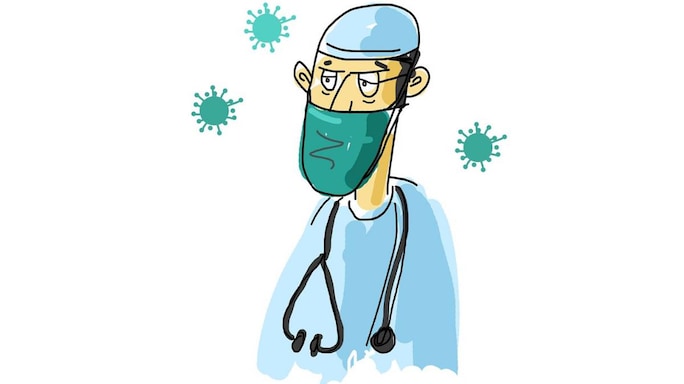- HOME
- /
- Health & Wellness
- /
- Conditions
- /
COVID-19 Symptoms That Have Made It Difficult For Doctors To Find A Cure
As the pandemic progresses, the COVID-19 disease keeps on exhibiting newer and more diverse symptoms
 Illustration courtesy Pixabay
Illustration courtesy Pixabay
On 13 May, Dr Michael Ryan, an expert with the World Health Organization (WHO), warned that just like HIV, the SARS-CoV-2 virus “may never go away.” He had his reasons to forecast such a depressing possibility.
One of the reasons for this fear is the threat of the virus mutating. In an article in The Guardian, science editor Ian Sample notes that mutations in viruses are often accidental and can occur in a number of regions. While this makes it difficult to locate the source or hotspot of the mutations, what’s more worrying is that researchers have found evidence that some strands of the COVID-19 virus are undergoing mutations in the critical spike protein, which the virus uses to invade host cells. This, the researchers fear, will lead to increased and faster rates of infection.
Add to this the various strands of the virus and their varying levels of virulence, infection rates and fatalities, and the situation is infinitely compounded. Here, we take a look at some of them, starting from its early days.
Diarrhoea, Nausea, Vomiting
In February, a study conducted on patients in Wuhan found that some patients developed gastrointestinal symptoms and ailments, such as diarrhoea, nausea and vomiting, earlier than they contracted fever and dry coughs. Headaches and dizziness were also common in these patients. These were, however, some of the rarer symptoms, as only 10 per cent (roughly) of those chosen for the study were afflicted by these. A Stanford Medicine study in April seems to have reinforced the findings of the previous study.
Loss of Taste and Smell
In April, researchers from the UC San Diego Health reported their empirical findings regarding the loss of taste and smell in COVID-19 patients. In fact, their study advised to make this a screening measure for COVID-19 diagnosis. Since then, this has been one of the more universally-observed, but unexplained, symptoms. Fortunately enough, these are among the mildest symptoms, and recovery of taste and smell roughly corresponds to the time it takes to recover from the disease.
Chilblains Or COVID-Toes
Chilblains are inflammations of small blood vessels, which generally occur as a reaction to cold and damp conditions. Inexplicably, chilblains in the toes (which show up as red, itchy patches or blisters) have also been one of the most identifiable, distinctive features of a mild form of the COVID-19 disease. A sizeable number of COVID-19 infected children and teens have shown this symptom, which has since been named COVID-toes.
 The sheer number and variety of symptoms makes COVID-19 a tough nut to crack. (Image used for representative purposes only. Courtesy Pixnio)
The sheer number and variety of symptoms makes COVID-19 a tough nut to crack. (Image used for representative purposes only. Courtesy Pixnio)
Conjunctivitis
The possibility of an ocular route of COVID-19 infection was hinted at, in a Chinese study which found traces of SARS-CoV-2 in the tears and conjunctival secretions of coronavirus patients also suffering from conjunctivitis (pink eye). Based on the study, the American Association of Opthalmologists requested eye doctors to ask conjunctivitis patients the standard queries regarding coronavirus infection. Moreover, the clinical experience of the opthalmologists seems to have validated the findings of the Chinese study, hence the decision to take extra precautions against people with red, itchy, inflamed eyes.
Loss of Speech and Movement
The WHO lists the loss of speech and/or movement as two of the most serious symptoms of coronavirus infection, alongside shortness of breath and breathing difficulties. People suffering from such symptoms inexplicably are advised to look for medical attention immediately, by first contacting a health-care provider so that they can be directed to the right centre.
Rashes and blood clots
A report in the journal Nature states that critically-ill COVID-19 patients are increasingly developing rashes and blood clots, even in the smallest vessels in the body, such as in the lungs. Moreover, studies in Netherlands and France have suggested that as much as 20-30 per cent of critically-ill COVID-19 patients have exhibited these complications, which have then often led to strokes and sudden death. Researchers argue that this is one of the newest, unexplained manifestations and also one of the most lethal.
Kawasaki-like disease
According to The Lancet, the Italian province of Bergamo has, over the past month, reported a 30-fold increase in occurrences of a severe form of a rare and severe Kawasaki-like disease, potentially associated with the SARS-CoV-2 virus, in children. The Kawasaki disease is an extremely rare inflammatory disease affecting blood vessels in children below five years. It is of unknown cause but arguably triggered by an autoimmune response, the most striking feature of which is the so-called ‘strawberry tongue’. Alerted by this sudden spike in Bergamo, the Centers for Disease Control and Prevention (CDC) has advised doctors to look out for potential occurrences of this disease (alternatively named Multisystem Inflammatory Syndrome in Children Associated with Coronavirus Disease 2019 by the CDC) in children.






